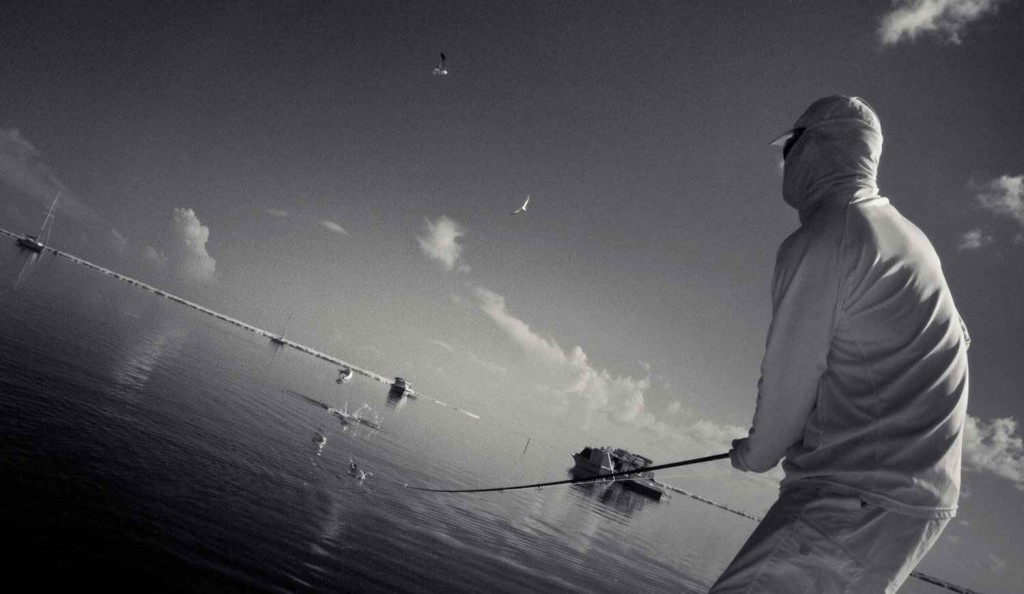
Joel Dickey quickly lands a tarpon in the morning by locating feeding seagulls. Photo By: Louis Cahill
By Kent Klewein
Certain times of the year in both freshwater and saltwater, anglers can use flocks of actively feeding birds to locate large concentrations of bait and fish.
This was the case during my recent fly fishing trip with Capt. Joel Dickey. First thing, early in the morning, we’d run a wide sweeping perimeter with the boat, as we searched for seagulls on the feed. Binoculars weren’t a necessity but they allowed us to be more efficient by eliminating large areas of water that would otherwise be too far off for the naked eye. Being patient, continuing to cover water, and keeping confidence were the key factors in us successfully locating feeding birds. Be prepared for it to take a little while some days. For us, each morning it took a little while to find the birds, but eventually things fell into place with each scouting attempt. As the sun begins to rise over the horizon, it creates a perfect contrast of light that turns seagulls a bright neon white. You’d be surprised how far off you can pick out feeding birds this time of day. Any birds you find on the water means there’s probably bait and fish near by, but when you find diving birds in good numbers, you know there’s a feeding frenzy in progress.
I’ve used birds many times in the past to locate schools of striped bass on my local reservoirs, but this saltwater trip was my first time using seagulls to locate tarpon. The seagulls and tarpon were feeding on a shrimp die off, that happens during the hottest times of the year in the evenings and at night. During these periods photosynthesis is not taking place, and with the lack of wind, oxygen levels in the water dropped below average. I have to say it was an adrenaline pumping way to fish for tarpon. We’d cruise in on plane and cut the engines at a safe distance, allowing us to coast in quietly to avoid alerting the feeding tarpon. Immediately following, Joel would jump on his platform and quickly pole us into the schools of rolling tarpon.
The key to getting bites was finding a rolling tarpon within casting range, and then firing a presentation quickly 3-5 feet in front of the tarpon. The hardest part for me to get used to was immediately determining which direction the rolling tarpon was facing, and then dropping the fly in the small target zone right in the tarpons path with only two to three false casts. This method of fishing for tarpon is much different than targeting migratory tarpon on the move. You, usually get a much clearer and longer look at the tarpon cruising, and the presentation to me is a little easier, because you generally lead and cross the fish more (in ideal situations) and then strip your fly into the tarpons path. For rolling tarpon, you don’t have the little bit of extra time nor do you want to cross the fish or lead it as much. The best times for using birds to locate schools of tarpon this time of year is during the early morning hours. Once the sun gets up, the shrimp die off subsides and the feeding frenzy fades.
Keep it Reel,
Kent Klewein Gink & Gasoline www.ginkandgasoline.com hookups@ginkandgasoline.com Sign Up For Our Weekly Newsletter!
Sign Up For Our Weekly Newsletter!
